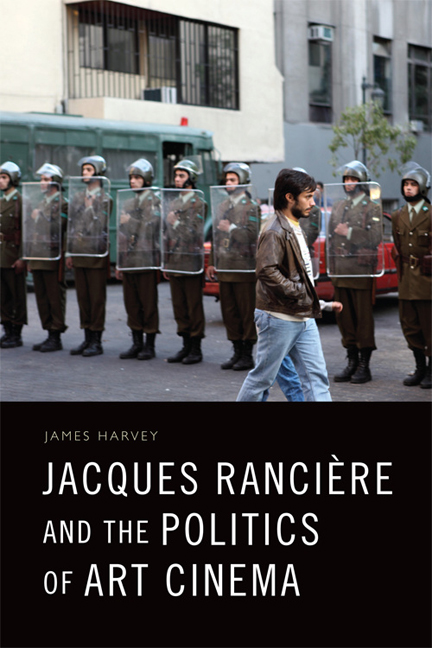2 - Larraín’s Ambivalence
Published online by Cambridge University Press: 28 April 2021
Summary
[T]he lexical homonymy of the word resistance is … ambivalent on the practical level: to resist is to adopt the posture of someone who stands opposed to the order of things, but simultaneously avoids the risk involved with trying to overturn that order. And we know, in this day and age, that the heroic posture of staging ‘resistance’ against the torrent of advertising, communicational, and democratic rhetoric goes hand in hand with a willing deference to established forms of domination and exploitation.
(Rancière 2010: 169)As we have seen, for Rancière, ‘political art would ensure, at one and the same time, the production of a double effect’ (2004: 63). An ambivalence occurs, therefore, between the representation of political events and an aesthetic interruption that complicates the social message. Although Rancière never uses these exact terms, ambivalence is a kind of metaphysical necessity in his political theory. As such, it informs his difference from many other contemporary thinkers – from the universality of neo-Marxists to the antiuniversality of the post-structuralists. Resistance, as he states in the above passage, is itself an ambivalent notion: our resistant actions are usually performed through channels informed by that which we resist. To avoid the trap of inertia, then, the question for a political art is: how can we shake this undecidable position while retaining the ambivalence of the ‘double effect’?
Theories of politics in cinema have tended towards an outright opposition to the techniques of the mainstream. The possibility of political action evolving out from within a film has tended to demand didactic explanations, which would account for cinema's essentially ideological nature. Jean-Luc Comolli and Paul Narboni (in ‘Cinema/ideology/criticism’, 1971) coined a way of mapping ideological categories for every film. They claim that, to engage critically with its ideological situation, a political film must produce a disruption on both a narrative and formal level. For example, films might have ‘an explicitly political content … but … not effectively criticize the ideological system in which they are embedded because they unquestioningly adopt its language and its imagery’ (1971: 6). They are, effectively, referring to the well-worn art cinema mode of leftism in classical narrative fiction. Comolli and Narboni's argument would come to pre-empt the films and theories of political modernists.
- Type
- Chapter
- Information
- Jacques Rancière and the Politics of Art Cinema , pp. 42 - 60Publisher: Edinburgh University PressPrint publication year: 2018



